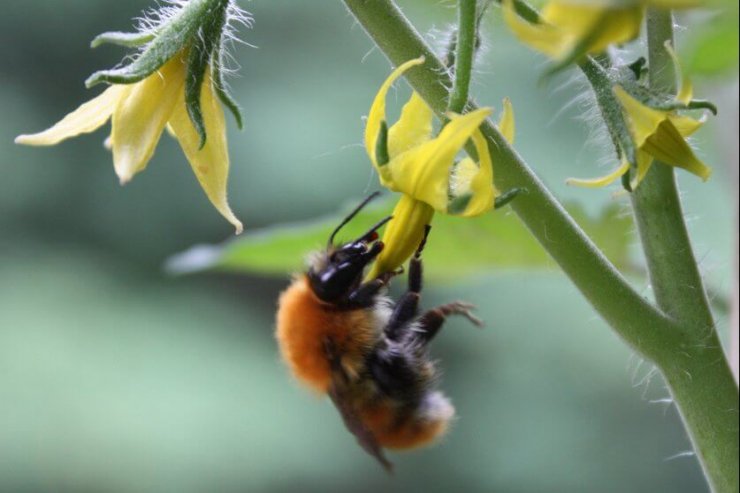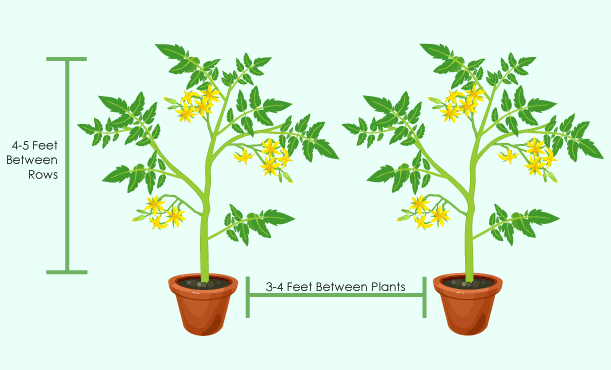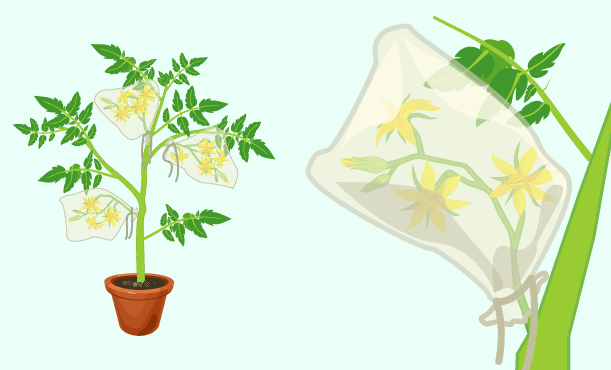Tomato plants are self-pollinating, because their flowers have both male and female parts. Most plants aren’t routinely exposed to natural cross-pollination, however, if a bee or other insect were to access some of the flower, cross-pollination could occur between two differing varieties of plants. Even the wind or a strong breeze can cross-pollinate tomatoes that are located near one another.

Bee on a tomato flower
Heirloom tomato growers want to preserve the heritage of their plants and save the seeds for future growing seasons. So, avoiding cross-pollination is essential for genetic pureness. There are two main ways to avoid tomato cross-pollination:

Distancing Method
- Distancing Method: The wind, if strong enough and in the right direction, can naturally cross-pollinate your tomato plants. By setting your plants apart at appropriate distances—3 to 4 feet between plants and 4 to 5 feet between rows to create buffer zones—you can minimize the possibility of wind-based cross-pollination of your heirloom tomato plants.

Blossom Bagging Method
- Blossom-Bagging Method: While some bees tend to avoid tomatoes and other nightshade plants, other species of bees could find their way to your heirloom plants and cross-pollinate, ruining your heirloom tomatoes’ genetic purity. Your best bet to avoid cross-pollination from bees and other insects is to cover the plant blossoms with cloth material. Bag the blossoms before they open, but not when they are too small. Using properly-sized cloth bags with drawstrings can make this tedious task easier. Don’t tighten the bags too much, or you could kill the blossom. You’ll need to regularly tend to the bags—shaking them to self-pollinate and removing the bags when the fruit takes hold.
What types of heirloom tomatoes have you tried growing? Please tell us about your experiences with heirloom tomatoes.


 Previous
Previous

